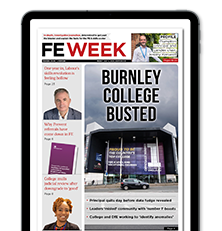Everyone knows that teaching GCSE English resit students is a tough gig. These students come to FE colleges feeling like failures, because they don’t quite measure up to the grade-four yardstick of perceived success. They arrive full of negativity towards English as a subject, harbouring feelings of inadequacy and swallowing bitter pills of resentment at being forced to take the hated exams again.
So, yes, we face quite the challenge trying to change their mindset.
During this past year, I decided to experiment by offering my classes a choice of texts and topics during our GCSE English re-sit course, to see if this would have any impact on engagement or motivation.
Why on earth would I do that? Well, I realised that our GCSE re-sit students had little or no input into the content of their course. This seemed unfair: why should only teachers get to pick which fiction extracts to use or which non-fiction topics to explore when it’s the students themselves who will have to do all the work?
The other motivation behind this decision was purely selfish: I get easily bored teaching from the same old extracts or the same old past papers. And if I’m bored? Well, odds are that the students will be bored too.
So last summer I gathered and prepared a range of exam-style fiction extracts and questions, mostly using stories that I had actually read and enjoyed. Every term, I offered each class a choice of two. I shared a short extract from each, and then the classes voted on which one we’d use.
The impact was immediate: students responded more positively to the extracts that they had chosen. Of course, not everyone voted for the winning extract choices. However, the democratic process gave the choice legitimacy, and no one complained.
Because these were mostly extracts and exam-style questions that I had created myself, I knew that it was highly unlikely any of my students would have seen them before (unlike all the old past papers, that get re-used year after year).
It is their course after all, not mine
Additionally, it really kept me on my toes. Having to juggle using different extracts with different groups meant that I never got bored.
I used a similar approach with non-fiction exam-style extracts and questions. However, instead of offering choices of specific texts, I asked students to vote by topic. Throughout the year, classes chose from this menu of possible topics: tattoos and body art, education, ice-cream, animals, music, smartphones, or smoking and vaping.
It hasn’t all been plain sailing: one student had a specific sensitivity to a certain theme, so I had to hastily change the choice of texts for that class to avoid upsetting them.
In a different class, the margin was just one vote, which meant that some students were unhappy with the outcome. However, as I explained to them: that’s how democracy works.
Now that the GCSE exams are over, I asked my students for feedback on what they thought about being offered choices to help curate the course content. Their responses were overwhelmingly positive, indicating that they not only liked having choices but that having choices helped to motivate them. Some students told me that they would like more choices like this.
In response, I’m now looking to develop this approach on a bigger scale next year: I’ve already been gathering a wider selection of extracts and exam-style resources, and I want to empower my students to really have an impact on the course content by involving them in co-curating our learning plans, right from the beginning of the academic year.
Of course, we can’t change the exams or the skills that we need to practice, but I want my students to decide which topics we’ll discuss, which fiction extracts we’ll explore, and we’ll build the learning plan together.
It is their course after all, not mine.
Why not offer your students some choices and see what happens?













Your thoughts